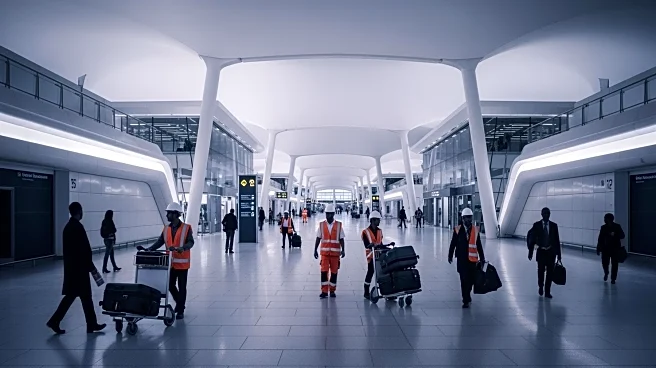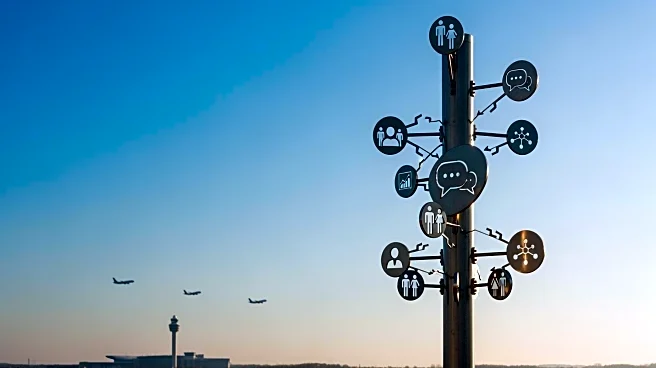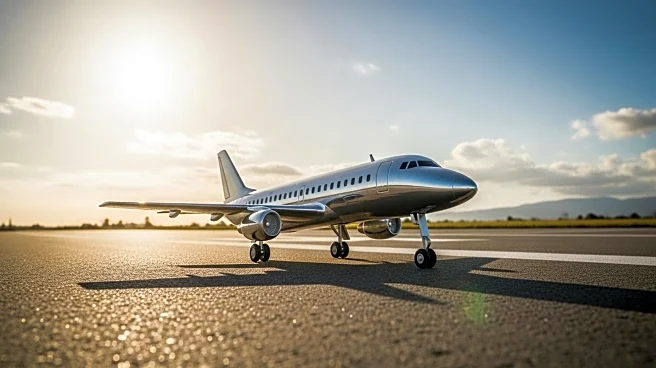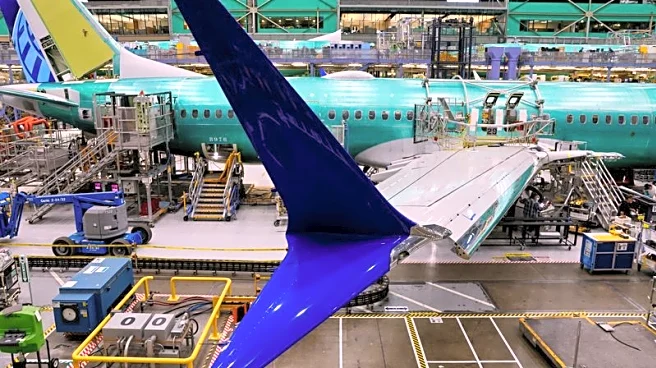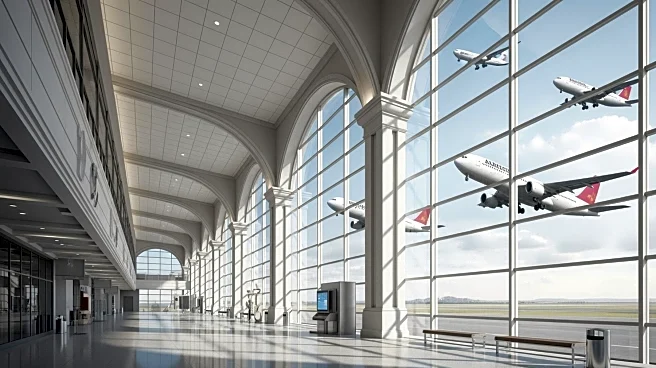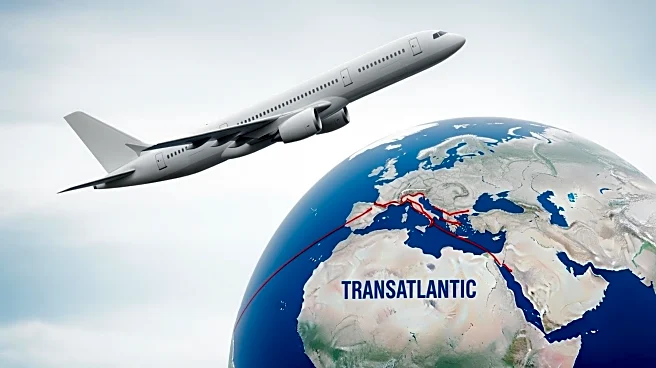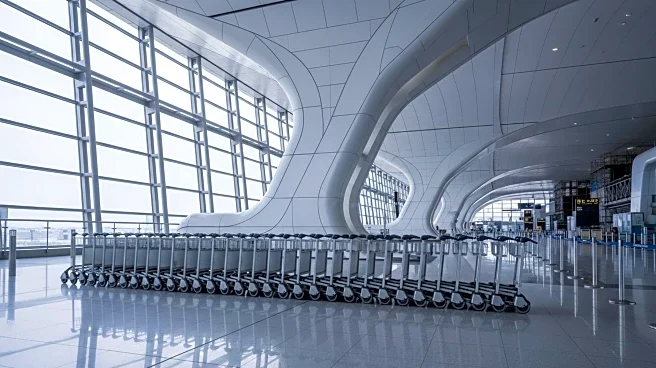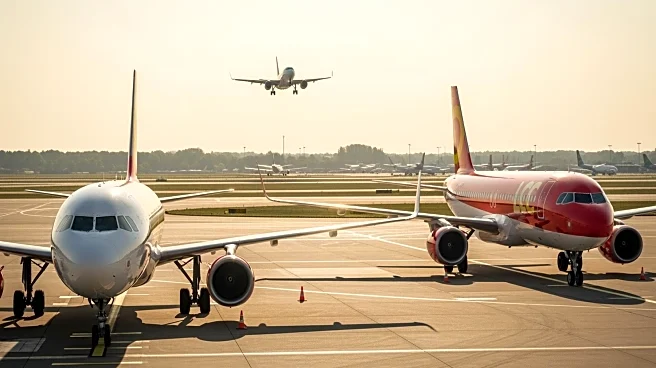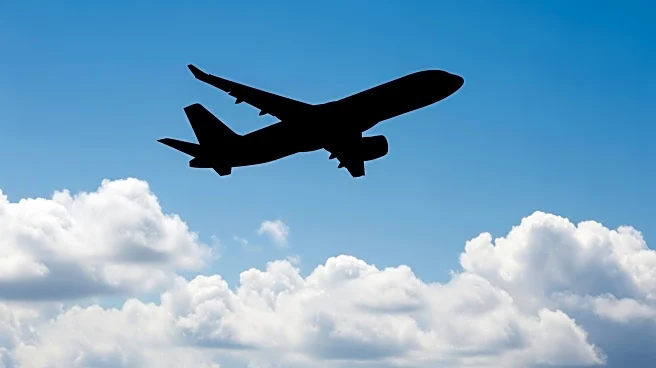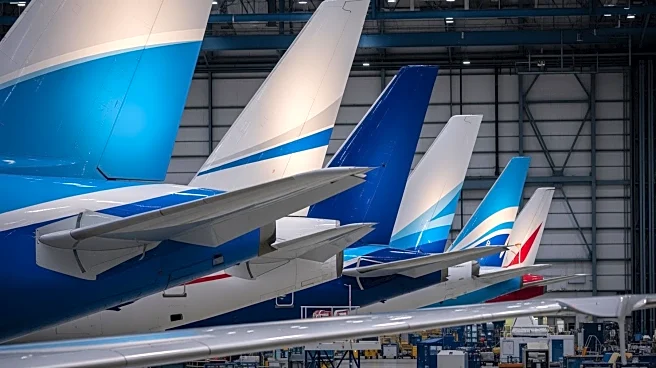What's Happening?
Manchester Airport has reported its busiest September on record, with over 3.1 million passengers passing through the hub. This marks a 1.4% increase compared to the previous year. The surge in passenger numbers is attributed to late-summer travel and
events such as Oktoberfest and European football matches. The airport is nearing the completion of its decade-long transformation project, which includes the expansion of Terminal 2. The new terminal has already received accolades for its design and is now accommodating more airlines as Terminal 1 prepares for closure. Recent developments include new check-in areas, security halls, and the opening of new shops and restaurants.
Why It's Important?
The expansion of Terminal 2 at Manchester Airport is significant for both the airport and the region. It enhances the airport's capacity to handle increased passenger traffic, thereby supporting economic growth and connectivity in the North of England. The improved facilities are expected to attract more airlines and passengers, boosting tourism and business travel. The airport's ability to efficiently manage large volumes of passengers with minimal wait times also enhances its reputation as a major international hub. This development is likely to have positive implications for local businesses and the broader economy.
What's Next?
As the transformation project nears completion, Manchester Airport plans to continue moving airlines from Terminals 1 and 3 to the newly expanded Terminal 2. This transition is expected to be completed soon, with Ryanair remaining the sole operator at Terminal 3. The airport is also working on a multi-million pound project to improve Terminal 3. Passengers are advised to check their terminal information before traveling, as changes may affect their usual travel routines. The airport will provide staff support during this transition to ensure a smooth experience for travelers.
Beyond the Headlines
The expansion of Manchester Airport's Terminal 2 not only improves operational efficiency but also reflects broader trends in airport design and passenger experience. The focus on accessibility and convenience, as seen in the new Assistance Lounge, highlights the growing importance of inclusive travel facilities. This development may set a precedent for other airports aiming to enhance passenger satisfaction and operational capabilities.
